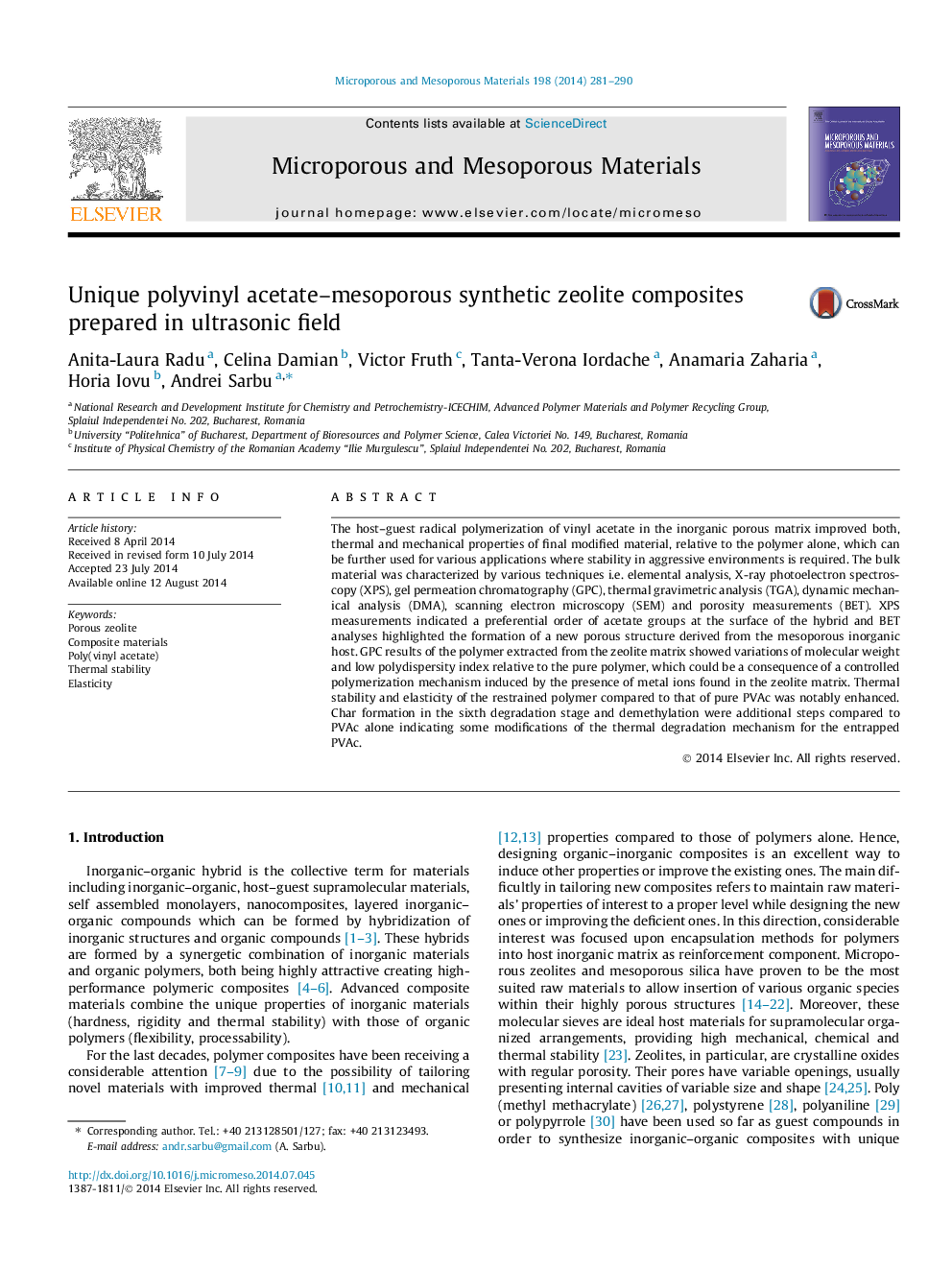| کد مقاله | کد نشریه | سال انتشار | مقاله انگلیسی | نسخه تمام متن |
|---|---|---|---|---|
| 72959 | 49038 | 2014 | 10 صفحه PDF | دانلود رایگان |
• A mesoporous synthetic zeolite, HZSM-5 was used as reinforcement matrix for PVAc.
• The host–guest structures were obtained in ultrasonic field.
• The PVAc extracted from the zeolite presented a narrow polydispersity, close to 1.
• Thermal stability/elasticity of PVAc restrained in the zeolite pores were improved.
The host–guest radical polymerization of vinyl acetate in the inorganic porous matrix improved both, thermal and mechanical properties of final modified material, relative to the polymer alone, which can be further used for various applications where stability in aggressive environments is required. The bulk material was characterized by various techniques i.e. elemental analysis, X-ray photoelectron spectroscopy (XPS), gel permeation chromatography (GPC), thermal gravimetric analysis (TGA), dynamic mechanical analysis (DMA), scanning electron microscopy (SEM) and porosity measurements (BET). XPS measurements indicated a preferential order of acetate groups at the surface of the hybrid and BET analyses highlighted the formation of a new porous structure derived from the mesoporous inorganic host. GPC results of the polymer extracted from the zeolite matrix showed variations of molecular weight and low polydispersity index relative to the pure polymer, which could be a consequence of a controlled polymerization mechanism induced by the presence of metal ions found in the zeolite matrix. Thermal stability and elasticity of the restrained polymer compared to that of pure PVAc was notably enhanced. Char formation in the sixth degradation stage and demethylation were additional steps compared to PVAc alone indicating some modifications of the thermal degradation mechanism for the entrapped PVAc.
Figure optionsDownload as PowerPoint slide
Journal: Microporous and Mesoporous Materials - Volume 198, 1 November 2014, Pages 281–290
